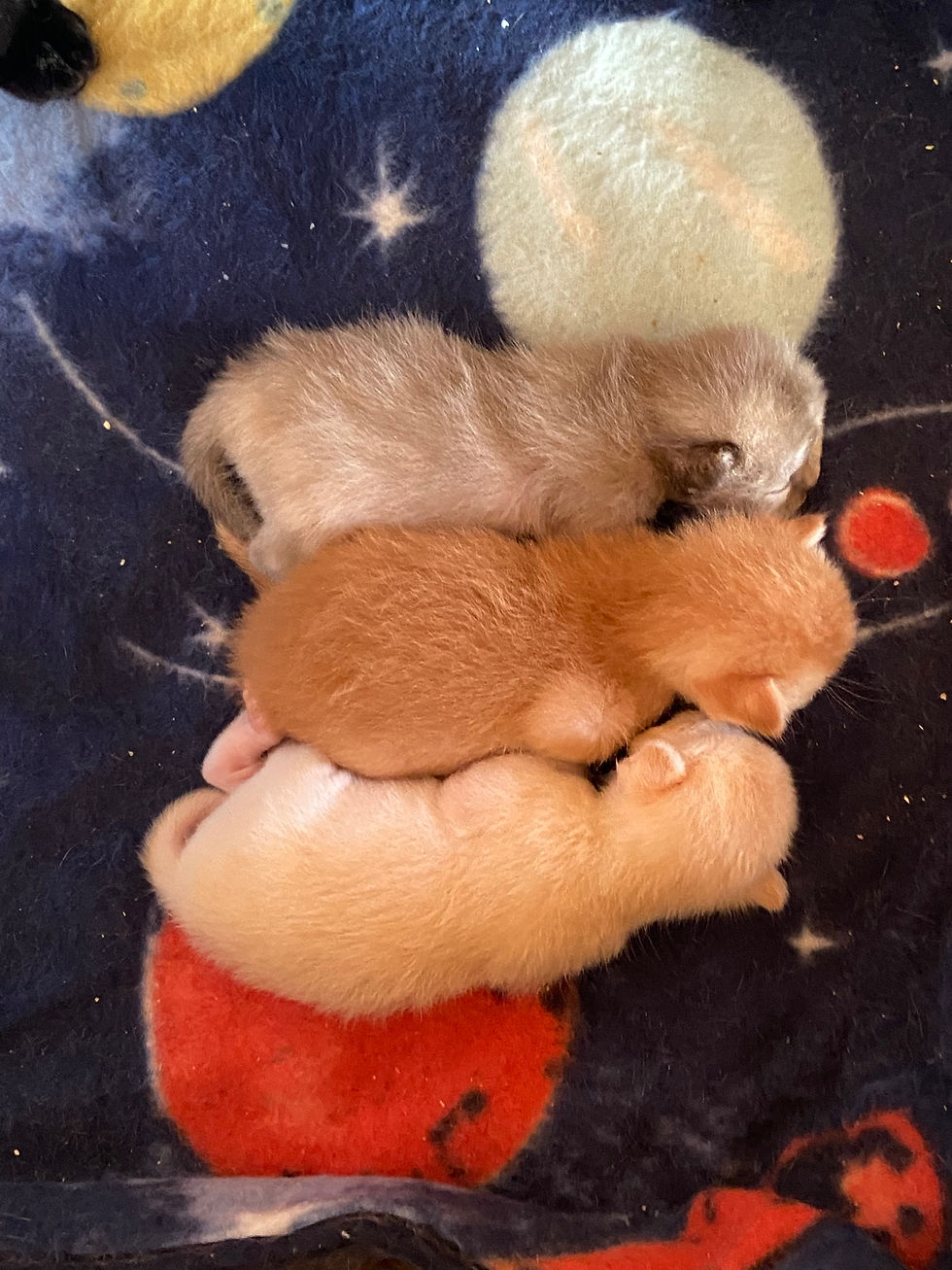Recessive Genes in Cat Breeding: PART ONE: What Is a Recessive Gene?
- miriamm00
- 10 hours ago
- 3 min read
Featuring the Dilute Gene — the “Soft Colour” Secret in Cats

When we admire a gorgeous blue, lilac, cream, or fawn cat, we’re really admiring genetics at work. Behind every coat colour lies a tiny set of instructions written in DNA — and some of those instructions are quiet, subtle, and easily overlooked. These are recessive genes.
Understanding them is the key to predicting colour outcomes, avoiding surprises in the kitten room, and protecting valuable genetic diversity in your breeding lines.
Let’s dive in.
Dominant vs Recessive: Who Speaks Loudest?
Every cat carries two copies of each gene — one from its mother and one from its father.
A dominant gene only needs one copy to be seen in the cat’s appearance.
A recessive gene needs both copies to match before it shows itself.
Think of dominant genes as speaking loudly:
“I’m here — and I’m in charge!”
Recessive genes whisper:
“I’ll wait quietly… unless there are two of me.”
So a cat can carry a recessive gene without showing it. These hidden carriers are incredibly important in breeding.
The Dilute Gene
The dilute gene affects how strongly pigment is produced in the coat. It doesn’t change the base colour family — instead, it softens it.
Black becomes Blue
Chocolate becomes Lilac
Cinnamon becomes Fawn
Red becomes Cream

The Genetics
Dominant allele: D (full colour)
Recessive allele: d (dilute)
Genotypes and Phenotypes
Genotype is the genetic code an animal carries, while phenotype (or "photo") is how those genes are actually expressed in its physical appearance or traits.
Genotype | What It Means | Coat Appearance |
DD | Non-dilute, not a carrier | Full colour |
Dd | Carrier of dilute | Full colour (but carries dilute) |
dd | Dilute | Dilute coat colour |
Only dd cats will appear dilute.
Carriers: The Hidden Players
A cat with Dd looks full colour — but secretly holds the dilute gene. Carriers are crucial because they:
Keep recessive traits alive in the breed
Can produce dilute kittens when matched correctly
Add diversity without changing phenotype
Recessive genes can hide for generations, then pop up when the right pairing occurs.
How Is Dilute Inherited?
Both parents must contribute one d allele for a kitten to be dilute.
This means:
Two dilute parents (dd × dd) = all dilute kittens
One dilute parent (dd) and one carrier (Dd) = 50% dilute, 50% carriers
Two carriers (Dd × Dd) = 25% dilute, 50% carriers, 25% full colour non-carriers
Punnett Square Example
Let’s imagine a mating between two carriers of dilute (Dd × Dd). Neither parent looks dilute — but both carry the recessive allele.
Carrier × Carrier
D d
----------------
D | DD Dd
|
d | Dd dd
Outcomes:
25% DD – Full colour, not a carrier
50% Dd – Full colour, but carriers
25% dd – Dilute kittens
So even if both parents look full colour, a dilute kitten can still arrive — like a genetic surprise party.
Why This Matters in Breeding
Understanding recessive inheritance helps breeders:
Predict litter outcomes
Make informed pairing decisions
Maintain colour diversity responsibly
Avoid accidental loss of valuable recessive traits
Carriers are incredibly important — they’re the hidden genetic custodians of recessive colours like lilac, blue, and cream.
Key Takeaways
A recessive gene needs two copies to be seen.
Dilute cats are always dd.
Full-colour cats can still carry dilute.
Carrier × carrier matings can produce dilute kittens.
Final Thought
Recessive genes may be quiet, but they shape some of the most beautiful colours in our pedigrees. By understanding how they work, we can plan breedings wisely — protecting both type and genetic diversity.
Glitterpaws science is my favourite kind!



So interesting - great refresher for anatomy and physiology "genetics" been a while